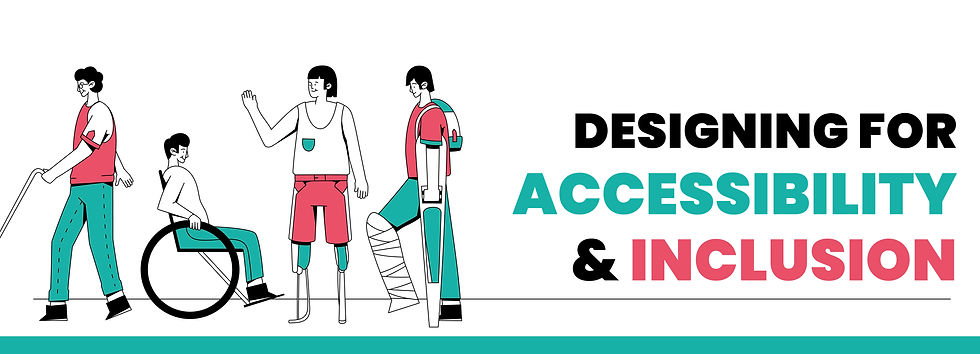
Designing for accessibility means creating products or services that can be used by everyone, regardless of their physical, cognitive, or sensory abilities. It's an important aspect of design that promotes inclusivity, diversity, and equal access to information and resources. With the right techniques and tools, designers can create accessible designs that benefit everyone and contribute to a more inclusive society.
One of the key principles of designing for accessibility is to consider the needs of people with disabilities. This includes people with visual impairments, hearing impairments, mobility impairments, and cognitive impairments.
For example, people with visual impairments may rely on screen readers or other assistive technologies to navigate websites or mobile apps. People with hearing impairments may rely on captions or transcripts to access audio content. People with mobility impairments may need alternative input methods, such as voice commands or switches, to interact with digital products. And people with cognitive impairments may benefit from clear and simple language, consistent navigation, and predictable user interfaces.
To make designs more accessible, designers can follow some basic guidelines. For example, they can use high contrast colors and legible fonts to make text easier to read for people with visual impairments.
They can provide alternative text descriptions for images, so that screen readers can convey the meaning of visual content to people with visual impairments. They can ensure that interactive elements, such as buttons or links, are large enough and spaced apart to be easily clicked or tapped by people with mobility impairments. And they can avoid using flashing or blinking content that may trigger seizures in people with photosensitive epilepsy.
Another important aspect of designing for accessibility is user testing. Designers can work with people with disabilities to test their designs and get feedback on how to improve them. User testing can help identify barriers to accessibility and provide insights on how to make designs more inclusive. It can also help raise awareness of the importance of accessibility among designers and stakeholders.
There are also many tools and resources available to help designers create accessible designs. For example, there are color contrast checkers, screen reader emulators, and accessibility plug-ins that can help identify and fix accessibility issues.
There are also guidelines and standards, such as the Web Content Accessibility Guidelines (WCAG) , that provide best practices and legal requirements for accessibility. Designing for accessibility is not only the right thing to do, it also makes good business sense. Accessible designs can improve user experience for everyone, increase engagement and retention, and reduce legal risks and liabilities. They can also help companies reach a wider audience and tap into new markets. For example, the aging population represents a growing market of people with age-related disabilities who may benefit from accessible designs. In conclusion, designing for accessibility is a crucial aspect of modern design that promotes inclusivity, diversity, and equal access to information and resources.
By following basic guidelines, user testing, and using tools and resources, designers can create accessible designs that benefit everyone and contribute to a more inclusive society. Designing for accessibility is not only a moral obligation, but also a strategic advantage that can benefit companies and society as a whole.

Comments